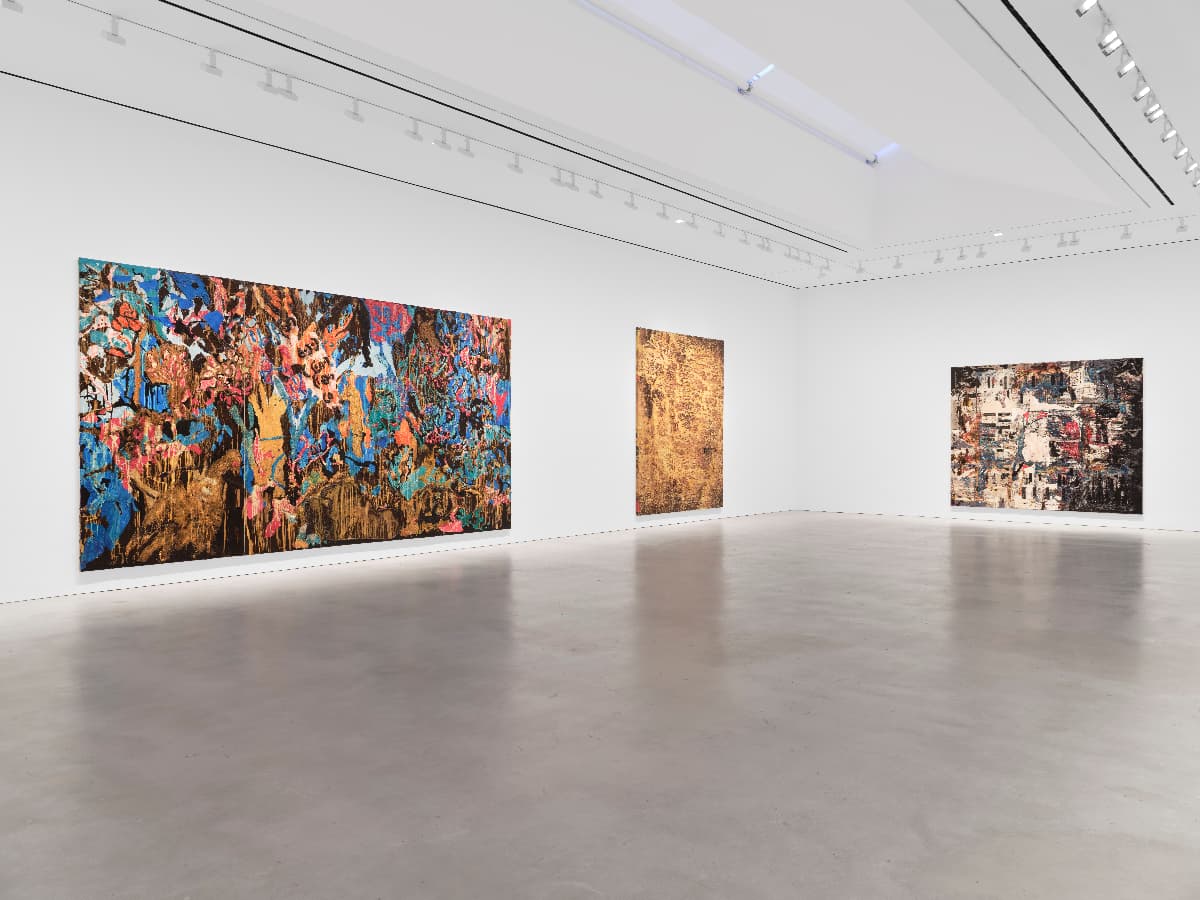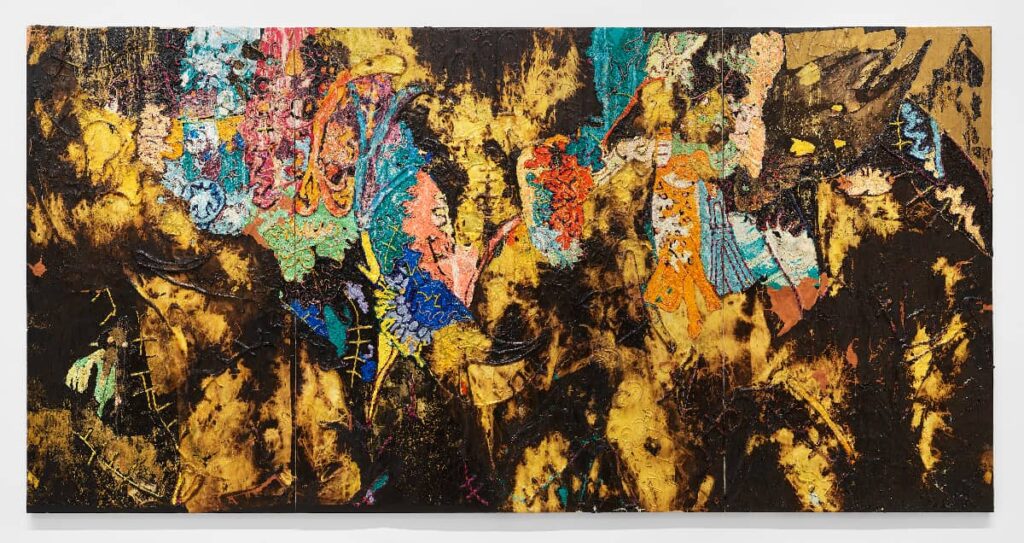Allegorical and Monumental, Mark Bradford’s Canvases Confront Viewers With Feral Energy
The artist’s heavily worked surfaces carry a strong residual sense of the labor put into them, and this lends them a rugged power.

Mark Bradford: ‘You Don’t Have To Tell Me Twice’
Hauser & Wirth, 542 West 22nd Street, New York, NY
Through July 28
Mortality, physicality, the passage of time and the realities of Black and gay experience: all these elements figure in Mark Bradford’s stunning current show at Hauser & Wirth 22nd Street. Allegorical and monumental, Mr. Bradford’s massive mixed media canvases dominate the space with feral energy. The gallery, large as it is, can barely contain them.
The effect can be overwhelming. They are the result of exhaustive months of gluing paper ephemera from his life — flyers, posters, advertisements, magazine clippings, and more — onto each surface with adhesive and pigment. The heavily worked surfaces carry a strong residual sense of the labor put into them, and this lends them a rugged power.
“Manifest destiny” is the first work to confront viewers. Towering at nearly twenty feet high, we can see the faint outline of the words “Johnny Buys Houses” embedded in its surface. It features Mr. Bradford’s longstanding theme of predatory financiers who target poor minorities in vulnerable communities, an outgrowth of his series of “merchant” paintings.
“Johnny the Jaguar,” on an opposite wall, is a canvas of shredded reds and blacks that introduces the Panthera Onca, the only panther native to the Americas. The jaguar, well camouflaged, bears its fangs near the bottom. Mr. Bradford also evokes the medieval European tapestry with its rich, brocaded surfaces, and fantasy portrayals of exotic animals. He sets up an allegory of predation, with “Johnny the Jaguar” as a mythical antagonist.
The Jaguar surfaces again in “Jungle Jungle,” a bronze stain in a riot of blues, vermilions and salmon pinks. “Fire Fire” is equally color-drenched but suffused with ripples of gold paint that drip like rivulets of flame against a black background. Both canvases portray flora and fauna native to the area of Blackdom, an early Black American homesteader settlement that sprung up in New Mexico, once again bringing Black historical themes to the foreground.

The bright American jungle gives way to monochromatic reflection on the gallery’s fifth floor, where Mr. Bradford has enlarged gridded charts of distances between United States railroad centers.
The numbers are embossed on paper in muted rusts, greys and off-whites, patinated surfaces that resemble the decaying pages of a registry. It addresses the Great Migration when six million Black Americans fled the Jim Crow South for the Northeast, Midwest and West.
Central to the show, however, is a video of Mr. Bradford at the age of twelve entitled “Death Drop,” in which he re-enacts a gangland shooting death. The young Mr. Bradford falls melodramatically to the ground in slow motion, then rebounds and comes back up in an endless, dream-like loop of death and resurrection.
The video speaks to the precarious lives of Black urban youth, but also his own whimsical theatricality: a parable of fate escaped through art. A giant sculptural version of the piece, covered in paper, lies sprawled at the centre of the timetable paintings.
As a 6-foot, 8-inch tall adolescent, both bookish and gay, Mr. Bradford has said he felt vulnerable growing up in his native Compton at Los Angeles in the 1980s. The future painter kept basketball coaches and bullies at bay while taking refuge at his mother’s beauty salon.
This, he said, would inspire one of his first student paintings at CalArts titled “endpapers,” in which salon hair papers are affixed to a canvas with adhesive. Mr. Bradford realized he had organically created a channel through which the raw materials of his life could be made into art. The flowering of that process continues.
In an age where much work wears its identitarian politics on its sleeve, Mr. Bradford’s approach is refreshingly nuanced, playing on the ambiguities and double meanings inherent in his experience. The racial, sexual, and historical resonances of his message are amplified, not diminished, by his honest commitment to the hard task of working materials until they yield meanings of their own.
Mr. Bradford invites you into a world of layers, where identity and place are the result of an exhaustive process of affixing and removing, presenting and obscuring, asserting and effacing. The rhythm of this grappling, this push and pull, pulses through every work. It is true to life, and that is what makes it great.

